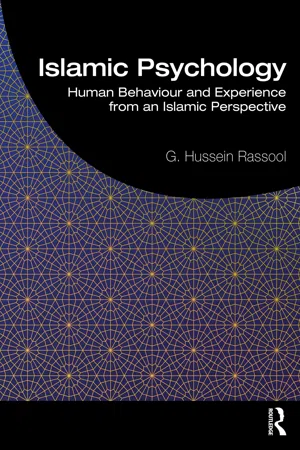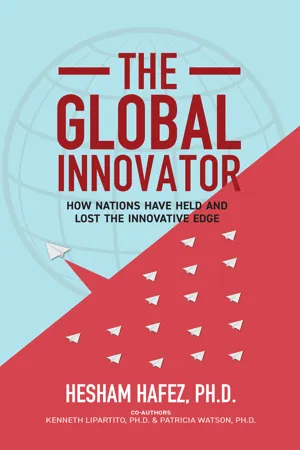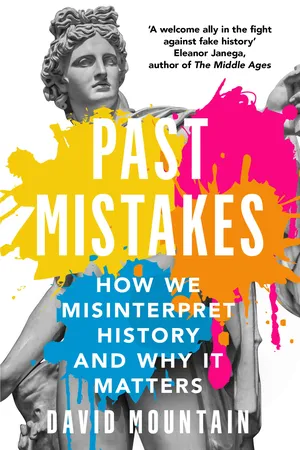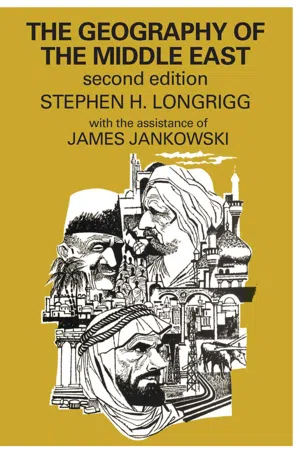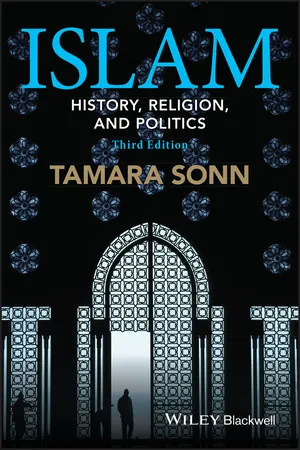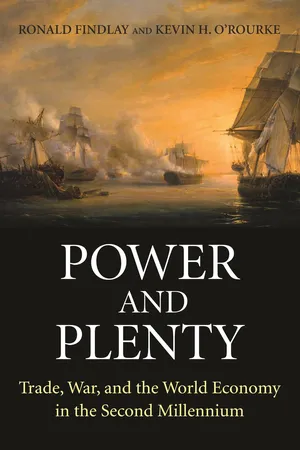History
Islamic Golden Age
The Islamic Golden Age refers to a period of cultural, economic, and scientific flourishing in the Islamic world from the 8th to the 14th century. It was characterized by significant advancements in various fields such as mathematics, astronomy, medicine, and philosophy. This era saw the translation and preservation of classical Greek and Roman texts, as well as the development of original Islamic scholarship.
Written by Perlego with AI-assistance
Related key terms
8 Key excerpts on "Islamic Golden Age"
- eBook - ePub
Islamic Psychology
Human Behaviour and Experience from an Islamic Perspective
- G. Hussein Rassool(Author)
- 2021(Publication Date)
- Routledge(Publisher)
786 to 809) and ended with the collapse of the Abbasid Caliphate following the Mongol invasions and the sack of Baghdad in 1258 ce. Three main dynasties shaped the development of the Islamic Golden Age: (1) the Abbasids in Baghdad (750 ce -1258 ce); (2) the Fatimids in Cairo (909 ce –1171 ce); and (3) the Umayyads in Córdoba (929 ce –1031 ce) in the west (Renima et al., 2016). This is a truly remarkable period in human history with the inauguration of the House of Wisdom (Bait-al-Hikmah) in Baghdad, which was a public academy, intellectual centre and library. What is remarkable, in the annals of history, is “The accomplishments made by Islamic scholars, philosophers, humanists, and scientists in all areas of the arts and humanities, the physical and social sciences, medicine, astronomy, mathematics, finance, and Islamic and European monetary systems over a period of many centuries” (Renima et al., 2016, p.25). During the period of the Islamic Golden Age, Europe was still in darkness and contributed comparatively little to human intellectual discourse until a period of awakening for Europe with the emergence of the Renaissance (period from the 14th to 17th centuries ce), and the flourishing of philosophy, the arts, sciences and new political systems. At the House of Wisdom, there were scholars from diverse communities and religio-cultural backgrounds from various parts of the world who were assembled and mandated to gather and translate all of the world’s classical knowledge, including the works of Greek philosophers, to Syriac and then to Arabic. All these scholars made significant and lasting contributions to Islamic intellectual and scientific achievements. In addition to Bagdad, other Islamic capital cities, like Cairo (Egypt), and Córdoba (Spain-Andalusia), became the main intellectual centres for the arts, science, philosophy, medicine and education. It is within this context that Muslim scholars excelled in the areas of health, medicine and psychiatry - eBook - ePub
The Global Innovator
How Nations Have Held and Lost the Innovative Edge
- Hesham Hafez, Kenneth Lipartito Phd, Patricia Watson(Authors)
- 2022(Publication Date)
- Think Twice Books(Publisher)
Intellectual centers of scholarship flourished throughout their empire, providing access to a wonderfully diverse body of cultural knowledge Muslims were eager to absorb. They restored the ancient ties between the key historic centers of civilization, bridging Hellenistic learning from Greece (and later Alexandria) with Sumerian, Persian, Indian, Chinese, and Egyptian wisdom. They forged an intellectual melting pot that began to thrive throughout the span of their empire, and promoted the free, rapid flow and exchange of ideas and scholarship, alongside, goods, credit, capital, and the instruments of trade and economic exchange. Only rarely in history does a society create such a flourishing of creativity and innovation. The Islamic Golden Age was one of those. 5 A Culture of the Book As the inheritors of the classical traditions of Greece, Persia, India, and Mesopotamia, the caliphs pursued an unprecedented program to gather, translate, and disseminate this ancient learning. During the seventh century, the Umayyad Caliphate initiated the movement to translate most of the corpus of the ancient Greeks into Arabic. This effort then gained momentum under the Abbasid Caliphate in the following century when it became a regular state-sanctioned activity. The third Abbasid caliph, al-Ma’mun (813-833 C.E.) built the House of Wisdom (Bayt al-hikma) in Baghdad in 832 C.E., a remarkable library and scientific center staffed with linguistic experts, scribes, and scholars who made translations of Greek, Pahlavi, Sanskrit, and Syrian treatises into hand-written Arabic books. Most of the translation industry centered in Baghdad, which became the new capital in the eighth century - eBook - ePub
Past Mistakes
How We Misinterpret History and Why it Matters
- David Mountain(Author)
- 2020(Publication Date)
- Icon Books(Publisher)
27It’s true that many examples of Islamic scholarship would not be considered scientific today. Medieval Islamic chemistry, though taking tentative steps towards a systematic study of substances, was still firmly rooted in the magic of alchemy. Astronomy, for all its mathematical rigour, retained strong ties to astrology. Nevertheless, at its best the Islamic Golden Age could express 118 a truly scientific approach to learning: a belief in the importance of rigorous, repeatable experimentation, and a deep distrust of wisdom from authority. Ibn al-Haytham, the father of modern optics, actively encouraged his readers to challenge his findings. ‘Whosoever seeks the truth will not proceed by studying the writings of his predecessors and by simply accepting his own good opinion of them,’ he declared. ‘Whosoever studies works of science must, if he wants to find the truth, transform himself into a critic of everything he reads. He must examine tests and explanations with the greatest precision and question them from all angles and aspects.’28 Yaqub al-Kindi, a leading light of the translation movement, summed up this spirit with equal vigour: ‘we ought not to be embarrassed about appreciating the truth and obtaining it wherever it comes from, even if it comes from races distant and nations different from us. Nothing should be dearer to the seeker of truth than the truth itself.’29The wealth of learning streaming out from cities like Baghdad and Córdoba exerted an enormous influence on scholarship throughout North Africa, Asia and Europe. Byzantium was rescued from its self-imposed academic exile and returned to its studies with renewed vigour, with a succession of scholarly emperors channelling significant funds into the reopened university in Constantinople. Well-established trade routes between China and the Middle East allowed consecutive Chinese dynasties to learn of Islamic innovations in astronomy, engineering, mathematics and medicine. The city of Timbuktu, in what’s now Mali, absorbed these same innovations via the trans-Saharan trade routes to become a respected centre of mathematics and astronomy in its own right in the 15th and 16th centuries. 119 - eBook - ePub
- Stephen H. Longrigg, James Jankowski(Authors)
- 2017(Publication Date)
- Routledge(Publisher)
Apart from this latter territory, to which Islam penetrated only from the later eleventh century onwards, the strength of the hold of the new Faith, and (as we shall see) the local dilutions or admixtures which it was to undergo, varied widely; it produced everywhere, however, a specifically Islamic civilization with much in common which was outwardly apparent and much that was inwardly fundamental, while it was subject also to the strong influences of preexisting populations, environments and cultures. It followed that Muslim society differed perceptibly though unessentially in Egypt, Arabia, Syria and Traq, though all were Arabic-speaking and in close intercommunication. In Persia the Arabic language failed, in the end, to displace the Persian, and Persian national pride and idiosyncracy, art and subtlety, so far prevailed over the incoming Arab contribution that, two or more centuries after the conquest, Persia, though deeply Islamized in its own heterodox fashion, had still its language and its culture intact.2. Golden Age
The six centuries of the western Asian record, from A.D. 632 to 1258, were those of the early, the mature, and the final periods of medieval Islamic civilization. They formed the era of the Caliphate at its greatest (indeed its only) reality, and witnessed the succession of phases of power and decline, state-building and invasion, among the Middle Eastern peoples which gradually moved towards the setting of the stage, in the wasteful, disorderly fashion of human history, for the groupings and nations of our own time.The political history of the period, detail of which cannot be included in these pages, falls into stages which it is possible to delimit only by over-simplifying the course of events and ignoring a world of activity, intrigue and disorder which produced them. The succession of the first, the Veil-directed’ Caliphs, four in number, lasted for a bare generation (632-661) after the death of the Prophet; strife and jealousy were already stirring, and the third and fourth Caliphs were both murdered. Then while Islamic—at this stage Arab—rule was settling down in the new-conquered provinces, the Empire’s centre of gravity shifted in 661 from the Hijaz to Syria, and for a century the Caliph, deriving now from another branch the Prophet’s own tribe; the Quraish, ruled from Damascus by his viceroys and governors a still expanding Empire. The dominion of these Umayyid Caliphs was firm, efficient, worldly; but even their greatest rulers—Mu’awiya, ‘Abdul Malik, al-Walid—are today little remembered by the world at large. A second major shift of power, from Syria to Traq, marked the replacement of the Umayyid by the ‘Abbasid dynasty when the supreme power was seized by descendants of the Prophet’s uncle, al-’Abbas. These retained it, in changing and sadly diminishing form, from 750 until 1258, based still on the new capital of the Islamic world, Baghdad, founded by them in 762. This was the ever-famous Caliphate of the ‘Abbasids, the earlier period of which, in the eighth and ninth centuries of our era, was by far its finest in practical, as distinct from cultural, achievement. The long line of these Caliphs, succeeding always by family claim to an Empire which in temporal terms was later to diminish almost to vanishing point, contained great names—al-Mansur the founder of Baghdad, Harun al-Rashid, al-Ma’mun—as well as a host of obscure sanctified puppets. The political unity of the Empire was broken increasingly and beyond hope of repair, from the mid-ninth century onwards, by the establishment of a score of effectively independent states within nominally Caliphate territory; these offered the Commander of the Faithful a merely formal allegiance or none at all, while of many temporal dynasties, from the tenth century onwards, he was, otherwise than in Islamic prestige, the mere dependant. With the extinction of the ‘Abbasids by Mongol hordes in 1258 ends, save in Egypt and Syria, most of what still remained of the glories of medieval Islam. - eBook - ePub
Islam
History, Religion, and Politics
- Tamara Sonn(Author)
- 2015(Publication Date)
- Wiley-Blackwell(Publisher)
2 The Pursuit of Knowledge in the Service of God and Humanity: The Golden AgeThe conflicts that gripped the Muslim community during the caliphate of Ali interrupted the spread of Islamic sovereignty. But following his death and the establishment of the seat of Islamic government in Damascus in 661, expansion resumed with continued success. After replacing Roman rule in Egypt, Muslim forces pushed across North Africa. Joined by Berber (indigenous North African) converts, the Arabs crossed the straits from Africa to Andalusia (in modern-day Spain), ascending the mountain to which their leader Tariq gave his name (“Gibraltar” comes from the Arabic jabal tariq, Tariq’s Mountain or Mount Tariq). Within just one century of Prophet Muhammad’s death, Muslims had established Islamic sovereignty throughout much of Spain, which remained Islamic until the Reconquista in 1492. The Muslims’ advance into Europe was stopped in Gaul (France) by Charles Martel at the battle of Tours in 732.In the east, Islamic rule was established throughout former Sasanian lands, all the way to the Indus River and the border of China by the early eighth century. Islam continued its eastward spread through the fourteenth century, when traders and itinerant preachers traveled to China, South Asia, and Southeast Asia, establishing roots for the current Islamic countries of Indonesia and Malaysia. The Indian subcontinent was ruled by Muslims from the thirteenth century until the British took control in 1857. It was, indeed, a phenomenal expansion. And with it came the development of a highly sophisticated culture. Marked by openness and creativity, it was inspired by the Quran and Prophet Muhammad’s example and still serves as a model of what many believe a truly Islamic society can achieve. - eBook - ePub
- Theo Alistair(Author)
- 2023(Publication Date)
- Liberty In Print(Publisher)
20 The Arab and Middle Eastern Intelligentsia versus Islam The Myth of Islamic Golden Age and the Great “Muslim” ScholarsThe great philosophers and scientists who dedicated their lives to science, who stood up to Islam and paid a dear price for rejecting its teachings and discrediting its founders are currently introduced as Muslim scholars. The BBC’s “Science and Islam” documentary presented by Jim Al-Khalili, “The Story of God with Morgan Freeman,” Sigrid Hunke’s “Allah’s Sun over the Occident” and numerous other documentaries, articles, books about ‘Islamic philosophy’, ‘Islamic civilization’, and ‘Islamic science’ are a blatant betrayal of these medieval intellectuals. The same individuals who were declared heads of infidelity, apostates and enemies of Islam by the Islamic authorities and the most senior Islamic jurists of their times and considered as such to this day, have been converted to Islam hundreds of years after their death by people who either did not read their works or attempted to use them as means to deceive us through fabricating history.In the widely available film “Science and Islam,” the British professor of physics, who works at Sussex University stated shamelessly that Islam encouraged science. He said that Mohammad had encouraged his followers to “seek knowledge (ulem) even in China.” He failed to highlight that this saying attributed to Mohammad is considered a forgery by the senior Muslim jurists and masses. The British/Iraqi professor, who claims to be a descendant of Mohammad, also failed to mention that knowledge – ulem – in Islam denotes exclusively the Islamic narratives, not the empirical science nor philosophy. Most importantly, if Mohammad had indeed encouraged his followers to seek knowledge, where is the tangible evidence for that?Mohammad had never been interested in science, math, literature, art, or philosophy according to the original Islamic books. He did not establish a school or encourage his followers to study anything but his sayings and the revelations he dictated to them. Mohammad was illiterate or semi-literate at best, according to Islamic tradition. Allah told Mohammad: “Neither did you read any book before it, nor did you write any book with your right hand.” 565 Furthermore, Mohammad told his followers: “We are an illiterate nation; we neither write nor know accounts.” 566 - eBook - ePub
The Princeton Economic History of the Western World
Trade, War, and the World Economy in the Second Millennium
- Ronald Findlay, Kevin H. O'Rourke(Authors)
- 2009(Publication Date)
- Princeton University Press(Publisher)
The fusion of the two empires was thus now symbolized by the new bimetallic standard replacing their older gold and silver monometallic regimes. As we shall see the caliphate could back up the monetary reform with enormous reserves of both the precious metals, and with continued access to fresh supplies. The entire royal treasury of the Sassanians, consisting of 9 billion drachmas according to one estimate, was seized intact and large amounts of gold and silver plate were obtained from the former Byzantine provinces of Egypt and Syria. The gold mines of Nubia and West Africa were also accessible through trade and the silver mines of Iran and Transoxiana contained an abundance of deposits. With these resources at their disposal the Islamic World was able to enjoy monetary stability without any significant resort to debasement for over three centuries, so that the description of this era as the “Golden Age of Islam” holds true not just figuratively but literally as well. Indeed, Arab coins were widely appreciated in the Christian world, as we will see.This phrase, which we have used as the heading for this section, was the title of a classic book by Maurice Lombard (1975). In this brilliant work he said (p. 10) that “the Muslim World may be seen as a series of urban islands linked by trade routes” with the supply of precious metals lubricating the movement of goods and factors of production along these circuits. Each of these urban islands was a “center of purchasing power” or consumption, sustained both by local production and imports of consumer goods and raw materials, sometimes over great distances. Mecca and Medina were the cities in the Arabian Peninsula where the Islamic faith originated and they are to this day the two most revered holy sites. As we have seen, however, the political capital of the Islamic state was moved from Medina to the Syrian city of Damascus by the Umayyads and later to Baghdad by the Abbasids, and was never to return to the Arabian Peninsula. With both the Red Sea and the Persian Gulf in Muslim hands, the caravan trade across the peninsula lost its economic rationale. The holy cities were, however, the terminal points of the vast annual pilgrimages, the hajj, from all over the Islamic World and as such were of considerable economic importance as well. In addition, the peninsula served as a market for the trade in African slaves, and Medina became a center for training slaves in classical forms of music and dance that were then diffused all over the Muslim World. Another major economic activity was horse breeding, with the famous Arabian horses created by crossing Barbary and Iranian strains under the ideal climatic conditions of the high plateau of the Nejd in the northwest of the peninsula. - eBook - ePub
- Ernest Tucker(Author)
- 2019(Publication Date)
- Routledge(Publisher)
The development of civilizations globally has always been closely tied to the prosperity and flourishing of cities and trade, and the Islamic “Golden Age” was no exception. This term refers to the period of time roughly corresponding with the Abbasid caliphate (750–1258) when the Islamic world became one of the world centers of innovation and growth in a wide variety of disciplines and activities. Because of their unique location at the crossroads of Eurasia, medieval Islamic scholars mastered earlier traditions, preserved them, blended their legacies, and made contributions of their own. The Middle East became the main intermediary in trade and intellectual exchange between East and West, given that Islamic rule extended from Spain to India. In addition, the relative tolerance with which medieval Islamic rulers treated their non-Muslim subjects, particularly Christians and Jews as “People of the Book,” allowed the skills and energies of followers of many different faiths to contribute to this success.Abbasid caliphs relied on experts in many fields. Caliph al-Mansur appointed a vizier (Khalid ibn Barmak) who used two Persian astrologers to lay out the plan for Baghdad before it was built. Al-Mansur wanted to enhance Baghdad’s reputation, so he invited numerous scholars from neighboring cities to live there. As they moved there in significant numbers, they began to form a scholarly class, some of whom eventually rose to high positions in the Abbasid administration.Abbasids and the “House of Wisdom”
In 765, al-Mansur fell seriously ill and was advised to summon the renowned physician Jirjis for treatment. At that time, Jirjis presided over the medical teaching academy and hospital of Gundeshapur (see p. 1).After Jirjis had treated al-Mansur successfully, he was asked to remain in Baghdad for a few years. This created a continuing link between the Abbasid caliph’s court in Baghdad and Gundeshapur. The connection grew over the next few decades, until Caliph al-Mamun established the Bayt al-Hikma (English: “House of Wisdom”) in Baghdad itself. This House of Wisdom
Index pages curate the most relevant extracts from our library of academic textbooks. They’ve been created using an in-house natural language model (NLM), each adding context and meaning to key research topics.
